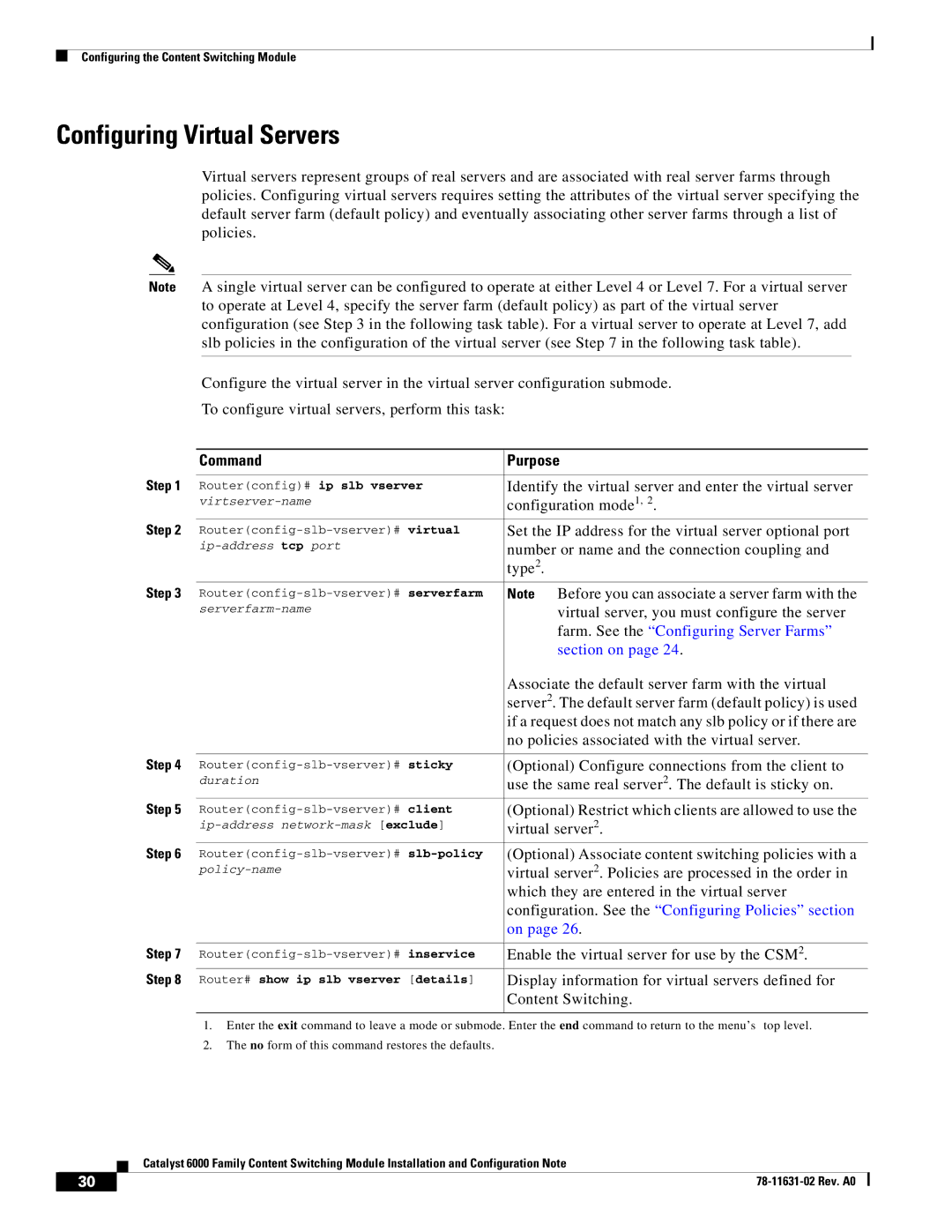
Configuring the Content Switching Module
Configuring Virtual Servers
Virtual servers represent groups of real servers and are associated with real server farms through policies. Configuring virtual servers requires setting the attributes of the virtual server specifying the default server farm (default policy) and eventually associating other server farms through a list of policies.
Note A single virtual server can be configured to operate at either Level 4 or Level 7. For a virtual server to operate at Level 4, specify the server farm (default policy) as part of the virtual server configuration (see Step 3 in the following task table). For a virtual server to operate at Level 7, add slb policies in the configuration of the virtual server (see Step 7 in the following task table).
Configure the virtual server in the virtual server configuration submode.
To configure virtual servers, perform this task:
| Command | Purpose | |
Step 1 |
|
| |
Router(config)# ip slb vserver | Identify the virtual server and enter the virtual server | ||
| configuration mode1, 2. | ||
Step 2 |
|
| |
Set the IP address for the virtual server optional port | |||
| number or name and the connection coupling and | ||
|
| type2. |
|
Step 3 |
|
|
|
Note | Before you can associate a server farm with the | ||
|
| virtual server, you must configure the server | |
|
|
| farm. See the “Configuring Server Farms” |
|
|
| section on page 24. |
|
| Associate the default server farm with the virtual | |
|
| server2. The default server farm (default policy) is used | |
|
| if a request does not match any slb policy or if there are | |
|
| no policies associated with the virtual server. | |
Step 4 |
|
| |
(Optional) Configure connections from the client to | |||
| duration | use the same real server2. The default is sticky on. | |
Step 5 | (Optional) Restrict which clients are allowed to use the | ||
| virtual server2. | ||
Step 6 | (Optional) Associate content switching policies with a | ||
| virtual server2. Policies are processed in the order in | ||
|
| which they are entered in the virtual server | |
|
| configuration. See the “Configuring Policies” section | |
|
| on page 26. | |
|
|
| |
Step 7 | Enable the virtual server for use by the CSM2. | ||
Step 8 | Router# show ip slb vserver [details] | Display information for virtual servers defined for | |
|
| Content Switching. | |
|
|
|
|
1.Enter the exit command to leave a mode or submode. Enter the end command to return to the menu’s top level.
2.The no form of this command restores the defaults.
| Catalyst 6000 Family Content Switching Module Installation and Configuration Note |
30 |
